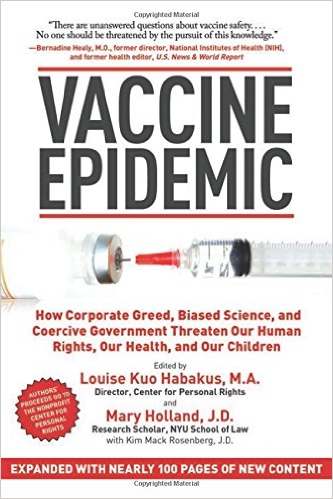Food, glorious food! We sure do love our protein, fats, and carbs. But did you know that the food we savor is basically useless to the body? Useless, that is, until we add a bit of biochemical alchemy.
What are enzymes?
Enzymes are proteins that act as catalysts to bring about specific biological reactions. Digestive enzymes help with, no surprise here… digestion! It’s how the body takes macromolecules of food and breaks them down into micronutrients — amino acids, cholesterol, sugars, vitamins, minerals — needed for energy, growth, and healing.
Classification is based on the type of chemical reaction catalyzed. Digestive enzymes hydrolyze food molecules by breaking down chemical bonds with water. The suffix “-ase” is used with the root name of the substance being acted upon. For example, when lactose is digested, it is hydrolyzed by an enzyme called lactase.
We make digestive enzymes. They’re secreted when we eat, starting with saliva. As food transits through the body, we get further enzymatic help from the pancreas, small intestine, and stomach.
If I already make them, why supplement?
You may be wondering if you need digestive enzyme supplements. Not everyone does. People with no underlying medical problems probably don’t have an enzyme deficiency. (The exception is lactase. It is normal to have lower lactase production after age five because we are supposed to be weaned off milk.) Many people, however, need additional support due to health issues and lifestyle choices:
WE EAT TOO MUCH
We consume large amounts of food and our bodies struggle to process it all. This is the new normal. One-third of children and two-thirds of adults in the U.S. are overweight or obese.
WE DON’T CHEW
Gulp! This isn’t just a matter of good manners. When we chew well, enzymes in our saliva thoroughly mix with food and we get a jump start on pre-digestion. When we wolf down a meal and send down a big lump of food, the stomach and other digestive organs must compensate.
WE EAT PROCESSED AND GM FOOD
The impacts of processed and genetically modified foods are worrisome, including the allergenic potential of novel proteins in food from GM crops. Artist Stephani Bardin and Harvard gastroenterologist Braden Kuo, MD use pillcam footage to compare the digestion of processed food and whole food. Take a look; it’s shocking.
WE OVERCOOK FOOD
Heat can denature food and destroy enzymes. For example, a 2009 digestion study found that “meat cooking leads to an important decrease of protein digestibility…”
If you’re opting for a raw food diet because of the enzymes, you should know that enzymes in raw food do not meaningfully contribute to our digestive needs. These enzymes are not there for us. Plant enzymes break down fruit so seeds can germinate. This process occurs over days to weeks whereas digestion must occur within a few hours.
WE MAKE POOR HEALTH + LIFESTYLE CHOICES
Digestion is hard work. How tired we are after eating a big meal! So it’s not surprising that poor health, and the lifestyle factors associated with it, impair digestion. These can include sedentary behavior, stress, and dehydration. Antibiotic use adversely affects the gut microbiome.
WE’RE SICK
In illness, the body must deploy precious resources to the critical tasks of healing. Health disorders — including anything that compromises pancreatic function or damages the cells lining the small intestine — can compromise production of digestive enzymes. Pancreatitis is the most common cause of enzyme deficiency. Others include cystic fibrosis, celiac, and Crohn’s.
Are all enzymes basically the same?
While most supplement companies obtain raw enzymes from the same source, the end product can differ:
MANUFACTURING STANDARDS
Companies use different manufacturers for blending, encapsulation, and packaging. Standards vary, as do the selection of excipients, fillers, lubricants, and additives. Keep in mind two things. First, dietary supplement manufacturers do not typically adjust their formulations for food intolerances or chemical sensitivities. Second, unless they state otherwise, companies generally use inexpensive excipients to maximize profit.
SELECTION + FORMULATION
There are 22 different enzymes available for dietary use and there’s only so much space in a capsule. Most people choose a broad spectrum product to hedge their bets, but everyone doesn’t need every enzyme. In the long run, it’s cheaper and more effective to find out what you really need.
ORIGIN OF RAW MATERIALS + CONTAMINATION RISKS
The enzyme supply chain is global and it can be challenging to trace the precise origin of raw materials, even for companies performing strict due diligence. The xylanase recall in late 2013 involved toxic antibiotic-tainted enzymes that found their way into the U.S., Canada, Europe, and Japan. The contaminated enzymes contained chloramphenicol, which is associated with bone marrow toxicity and death. Manufacturers now test all enzymes for this antibiotic.
Where do digestive enzymes come from?
There are three types of enzymes:
Animal-sourced include pancreatic enzymes. Pancreatin — comprised of protease, amylase, and lipase — is a mixture of enzymes produced by the exocrine cells of the pancreas and usually comes from pigs or cows.
Fruit-sourced include papain and bromelain. These are harvested from the latex of papaya and pineapple stems, not from the fruit.
Plant-sourced enzymes are derived from fungal fermentation. Aspergilli niger and oryzae secrete enzymes while grown on specific food medium. The enzyme liquid is subjected to a dozen purification techniques then spray-dried onto a matrix (usually maltodextrin). This produces a powder, which is standardized and diluted to a specific activity per gram.
What can enzymes do for me?
Plant-based enzymes are acid-stable so they begin the work of digestion while in the stomach when food is present. This jump starts the digestive process and eases stress on the GI tract and pancreas. Our bodies are designed to start the food breakdown process at first bite. In addition to increased energy and improved regularity, enzymes help to:
REDUCE GAS + BLOATING
Over 21% of the population suffers from abdominal pain or discomfort and 16% from bloating or distension with no evidence of inflammatory, anatomic, metabolic, or neoplastic process that explains the symptoms. For gas and bloating, enzymes such as alpha-galactosidase are helpful in adults and in children.
HANDLE “PROBLEM” FOODS
Enzymes can deactivate food proteins that produce bioactive peptides during digestion. Let’s say you’re lactose intolerant and ate some dairy; perhaps you indulged in a sundae or discovered too late that the chef added cream to the “vegan” bisque. Your evening isn’t necessarily ruined. Here’s why.
The stomach mechanically grinds foods and holds it for one to three hours prior to emptying into the small intestine where most absorption takes place. Very little nutrient absorption occurs in the stomach, with the exception of sugar, alcohol, and some vitamins. No proteins or peptides are absorbed from the stomach. This means that we have a window of opportunity of up to three hours to address a problem food while it’s still in the stomach.
Plant proteases can break down gluten, casein, soy, and other food proteins in the stomach. Stanford biochemist Chaitan Khosla, PhD researched gluten consumption with food-grade protease enzymes by those with celiac disease. His company, Alvine Pharmaceuticals, is fast-tracking an enzyme-based drug treatment for celiac disease.
Numerous peer-reviewed studies show that lactose malabsorbers benefit from enzymes (i.e., lactase from Kluyveromyces lactis and beta-galactosidase from Aspergillus niger) with objective and subjective efficacy and no side effects.
BOOST MINERAL + MACRONUTRIENT ABSORPTION
Phytate, which inhibits iron absorption, can be removed by dietary phytase. A study in Journal of Nutrition found complete degradation of phytate in the stomach when phytase was given, thereby increasing iron absorption from food.
Children with dysentery (acute intestinal inflammation) who were given a diet liquefied with amylase experienced substantially increased absorption of net macronutrients.
Enzyme FAQs
#1: DO I NEED ENZYMES?
The following are signs of sluggish digestion:
- Visible (recognizable) chunks of food in stool
- Tarry or oily stools
- Gas, pain, or bloating after eating
- Feeling of heaviness or hardness in the gut after eating
Before ordering stool tests, it’s worth giving enzymes a trial run. They’re inexpensive and safety has been established with a wide dosing window.
#2: WHAT ENZYMES DO I NEED?
Take stock of your diet and do a bit of sleuthing. After determining the foods that are implicated in your symptoms, match them with the right enzymes:
- STARCHES / BEANS = amylase, glucoamylase, alpha-glactosidase
- DAIRY SUGAR = lactase
- COMPLEX CARBS = amylase, glucoamylase, cellulase
- VEGGIES / FIBER = cellulase
- PHENOLICS / VEGGIES = xylanase
- FATS / NUT OILS = lipase
- GAS & BLOATING = alpha-galactosidase
- GLUTEN / DAIRY PROTEINS = dipeptidyl peptidase IV (DPP-IV)
- MEAT / SOY: proteases and lipase
A few things to keep in mind:
- Different protease combinations are needed for gluten, casein, and protein intolerances, including soy.
- Proteases don’t help with phenols.
- Nuts require lipase for the oils and xylanase for phenols.
- If you are gluten intolerant, try a protease combination to break down gluten
- If you are wheat intolerant, add amylase because your intolerance may involve the sugar groups found in wheat as well as gluten.
#3: HOW DO I KNOW IF THEY’RE WORKING?
Expect quick results. If you’re a good candidate, a quality enzyme product should produce noticeable improvements within a day or so. If you are lactose intolerant, a lactase product should work the first time you use it. If you don’t see any benefit, try a higher dose before assuming it doesn’t work.
#4: CAN I TAKE THEM WITH PROBIOTICS?
Yes. Pancreatic enzymes and gut bacteria co-exist peacefully within the GI tract. There is no evidence that oral proteases interfere with probiotics.
#5: CAN I GET ADDICTED TO ENZYMES?
No, but you may get addicted to having better digestion. Long-term use does not reduce the body’s ability to digest food on its own and has no effect on enzyme production. The pancreas continually produces enzymes in inactive form and stores them in pancreatic ducts until they’re needed after meals.
#6: CAN ENZYMES GIVE ME A STOMACH ACHE?
Not normally. The stomach already houses protease enzymes, such as pepsin which is active under pH 5. Enzymes don’t attack live tissue. They prefer to work on denatured food proteins (stomach acid does the denaturing). If dead or damaged tissue is present in the stomach, proteases may act as debriding agents. Debriding is often helpful but can be painful. For this reason, clinicians will tell those with bleeding ulcers or severe Crohn’s disease to use caution with high-protease enzymes.
#7: CAN ENZYMES CAUSE ALLERGIES?
Any food protein can be a potential allergen and this includes enzymes. Papain and bromelain are harvested from the latex of papaya and pineapple stems. If you have a latex allergy, avoid these enzymes (see resources list below).
#8: ARE ENZYMES GLUTEN-FREE?
The FDA says dietary supplements are gluten-free if they contain <20 ppm of gluten. Tests are currently able to detect 5 to 10 ppm. Some companies will clarify this by specifying, for example, GF-10. As assay sensitivity improves, we may find that products labeled gluten-free actually contain some gluten.
#9: ARE ENZYMES GMO-FREE?
The short answer is maybe not. The possible culprit is maltodextrin, which is widely used and derived from corn. Nearly all U.S. corn and 32% worldwide is genetically modified.
This concern doesn’t just relate to enzymes. Any supplement that was in liquid form at any time during manufacturing and then spray-dried to form a powder was probably sprayed onto a maltodextrin matrix. Companies aren’t required to disclose ingredients used in production; they’re considered “processing aids” and regarded as proprietary.
The corporate line is that an enzyme produced from a GMO is not genetically modified because it is not present in the final product. For more information, read statements by AMFEP and supplement company Chr. Hansen.
#10: WHAT ABOUT SERRATIOPEPTIDASE?
Serratiopeptidase is derived from an opportunistic human pathogen from the Enterobacteriaceae family. Some animal studies suggest that Serratia marcescens may activate or make some viruses more pathogenic. While there’s no research suggesting that serratiopeptidase is dangerous in humans, people who are exquisitely sensitive to environmental and dietary exposures may choose to operate with an abundance of caution.
We recommend…
After all that, you’re probably wondering what brands to try. There’s no “best” enzyme product or manufacturer. As with all supplements, it pays to do some research so you understand what you’re buying. Here’s why I reached out to Houston Enzymes:
- Devin Houston, the founder and chief scientist, holds a PhD in biochemistry and has focused his graduate, academic, and post-academic research on enzymes. He worked within an enzyme manufacturing facility, performs consults, and educates on enzymes.
- He designs his products using precise specifications based on his own research (unlike many other companies which defer to the manufacturer).
- He devotes significant resources to helping chronically ill patients with severe dietary restrictions and GI challenges, including children with autism.
- He keeps on-hand inventory low to maximize product freshness.
TRY THESE, TO START
If you’re just starting to use digestive enzymes, I recommend two high-potency targeted formulations; one for protein, and the other for fats and carbs:
- AFP-Peptizyde for protein
- Zyme Prime* for fats and carbs
This makes it easier to customize your dosage. If you also need support for phenols, then it’s more economical to try the broad-spectrum TriEnza, which includes the above two plus No-Fenol.
*Note: If constipation is a problem, use ZyCarb instead of Zyme Prime. It contains xylanase, which breaks down fiber and can help soften stools.
FOR A LIMITED TIME…
Houston Enzymes is offering Fearless Parent™ readers a 15% discount off enzymes through February 13, 2015. Click here or the above ad and enter “fearless15″ in the promo code box when checking out. Valid on retail U.S. and international orders, for enzyme products only. Not valid with any other offer.
 Please share your stories and experiences below. I’d love to hear them.
Please share your stories and experiences below. I’d love to hear them.
Bon appetit!
 Louise Kuo Habakus heads Fearless Parent™. She is the author of Vaccine Epidemic and founding director of the Center for Personal Rights. She is the host and producer of Fearless Parent Radio™. Louise was formerly a corporate vice president for Prudential Financial, a managing director for Putnam Investments, and a Bain consultant. She received two degrees from Stanford University.
Louise Kuo Habakus heads Fearless Parent™. She is the author of Vaccine Epidemic and founding director of the Center for Personal Rights. She is the host and producer of Fearless Parent Radio™. Louise was formerly a corporate vice president for Prudential Financial, a managing director for Putnam Investments, and a Bain consultant. She received two degrees from Stanford University.
Resources
BACKGROUND
- Digestive Enzymes. Science Learning
- Enzyme Technical Association website
- Industrial Uses of Enzymes. Biotechnology – Vol. VI. Michele Vitolo.
ALLERGIES
- The role of plant panallergens in sensitization to natural rubber latex. Curr Opin Allergy Clin Immunol, 2001.
- Asthma caused by Ficus benjamina latex: evidence of cross-reactivity with fig fruit and papain. Ann Allergy Asthma Immunol, 1998.
- Latex anaphylaxis. Acta Clin Belg, 1995.
- The latex-fruit syndrome. Biochem Soc Trans, 2002.
- Enzyme Technical Association website
CELIAC DISEASE
- Novel therapeutic approaches for celiac disease. Discov Med, 2014.
- Highly efficient gluten degradation with a newly identified prolyl endoprotease: implications for celiac disease. Am J Physiol Gastrointest Liver Physiol, 2006.
- Treatment of both native and deamidated gluten peptides with an endo-peptidase from Aspergillus niger prevents stimulation of gut-derived gluten-reactive T cells from either children or adults with celiac disease. Clin Immunol, 2014.
SAFETY
- Orally Administered Enzyme Food Supplement Safety Overview, Enzyme Technical Association, January 9, 2012.
- Safety evaluation of a lipase expressed in Aspergillus oryzae. Food Chem Toxicol, 1996.
- Safety evaluation of beta-glucanase derived from Trichoderma reesei: summary of toxicological data. Food Chem Toxicol, 1995.
- An overview of the safety evaluation of the Thermomyces lanuginosus xylanase enzyme (SP 628) and the Aspergillus aculeatus xylanase enzyme (SP 578). Food Addit Contam, 1997.
- Safety evaluation of a fungal pectinesterase enzyme preparation and its use in food. Food Addit Contam, 1998.
- Safety evaluation of amino peptidase enzyme preparation derived from Aspergillus niger. Food Chem Toxicol, 1998.
STANDARD FTC DISCLOSURE: In order to support our blogging activities, Fearless Parent™ may receive monetary compensation or other types of remuneration for our endorsement, recommendation, testimonial and/or link to any products or services from this site. Please note that we only ever endorse products or services that align with the Fearless Parent™ standards and that we believe will benefit our valued readers. You may read our full disclosure statements here.













We love Houston Enzymes. My boys, both on the very high functioning end of the autism spectrum, began taking them at a young age. They were the only thing that gave 1 son, with severe eczema, relief. After taking Peptizyde for awhile, he was able to add back in dairy with no return of the eczema.
We will always have Houston Enzymes in our house!
Thanks for a great article Louise. I just shared it in 3 private facebook groups for Health & Wellness professionals. As always, thanks for an informative, well researched article! Happy New Year.